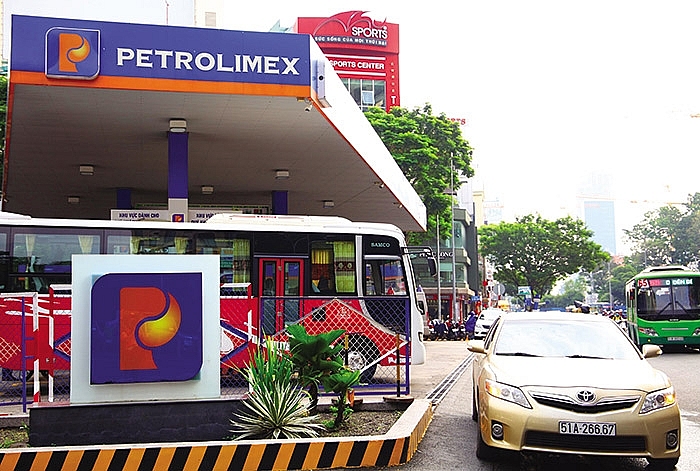Reaching SOE equitisation goals
 |
| Raymond Mallon, senior economic advisor for the Australia-Vietnam Economic Reform Programme |
There are several reasons for Vietnam to focus on achieving national targets on equitising state-owned enterprises (SOEs) and attracting private investment.
An important reason to focus on the above targets is to boost productivity growth, thus boosting incomes and living standards. International experience suggests that the competitive and market-based allocation of resources helps boost innovation and productivity growth. At times, it is in the nation’s interest for the government to intervene to correct market failures. Effective state intervention to correct market failure is best achieved via regulations focused on maximising national benefits that are developed by independent regulators in consultation with key stakeholders.
Problems of inefficiency and inequity often arise if the state is both the owner and the regulator. As has been seen in Vietnam and globally, such conflicts of interest lead to pressures for state ownership agencies to regulate in a manner that is not in the national interest. For example, by imposing business conditions or other restrictions on new businesses, a state agency can reduce the competition faced by its SOEs. This can make an individual SOE more profitable, but the resulting lack of competition stifles innovation and productivity growth. This hurts consumers because of higher costs and slower innovation, and workers because reduced productivity growth means reduced growth in wages. Regulations that constrain competition are clearly not in the national interest.
A second key reason for action on these targets is to reduce the opportunities for the misuse of state resources. It requires substantial capacity for any state, no matter how developed the country, to effectively exercise state ownership rights in a large number of SOEs. It is important that limited state capacity focus on effectively governing institutions that provide essential public services such as health, education, water supply and sanitation, environmental protection, energy, and roads. These are enormous tasks: the state should not waste its limited capacity by trying to manage large numbers of commercial businesses.
Also, many international economic co-operation agreements include commitments to “competitive neutrality.” That is, all enterprises should be able to compete equally, regardless of whether they are state-owned, domestic private businesses or foreign enterprises. These provisions, to which Vietnam has committed, are included in agreements to maximise potential for both national and regional productivity growth.
In addition to the above targets, complementary reforms are needed to ensure the more efficient delivery of public investments in supporting infrastructure and services that are needed to attract increased private investment. This implies a need for the government to also focus on strengthening public sector governance as an integral part of efforts to attract increased private investment.
 |
| Competitive neutrality ensures firms are treated equally, whether state-owned, domestic or foreign entities |
Opportunities ahead
Vietnam’s ongoing reform process has increased the opportunities for the successful realisation of both targets.
Reforms to the regulatory framework for business and investment have done much to level the playing field for all businesses. The key institutions needed for a competitive market economy are being strengthened. Capital and financial markets are developing and playing a more important role in business financing. Legal, accounting and auditing professions and nationally accepted norms of business behaviour are beginning to be better established. The quality of business and economic media and other reporting is improving.
These institutional developments provide a stronger institutional basis for the transparent and competitive sale of equity in state enterprises, and helping to increase investor confidence in investing in equitised entities.
Recent progress in reducing the preferential treatment previously provided to some favoured SOEs is also helping reduce potential resistance of SOE managers to reform. Increasing numbers of SOE managers see that it is in their interest – and in the interest of their business and workers – to be equitised, as this can increase the flexibility of managers to mobilise additional resources from Vietnam’s developing capital markets and to respond to emerging economic opportunities and challenges.
The recent focus of government reforms on reducing and simplifying business conditions has already had a positive impact on reducing the barriers to the entry of new businesses.
It has helped accelerate the transformation and growth of informal household enterprises into formal business entities with the potential to access the formal financial sector and a broader range of market opportunities. Reductions in fixed costs of entry have also made it easier for smaller foreign investors to access the Vietnamese market.
The results of these reforms are now being reflected in national economic indicators. For example, the share of domestic private investment in total investment is growing at a faster rate than both state or foreign investment, and growth in exports by domestic private businesses have exceeded growth in exports by foreign investors and SOEs over the last two years.
The challenge now is to sustain the reform process to continue reducing barriers to the growth and diversification of private business activity. The eventual aim should be to develop a dynamic and innovative private domestic corporate sector that is actively engaged in regional production networks and international markets.
Potential obstacles
The most immediate challenge for Vietnam is to sustain the reform process despite resistance from those groups benefitting from uncompetitive regulatory and institutional structures. Reforms are needed both to facilitate the transparent and competitive sale of state assets to non-state actors and to provide incentives to attract increased private investment. In order to address this resistance, it is important to develop the capacity of government and non-government agencies to undertake evidence-based policy analysis of the impacts of existing and planned policy initiatives.
The government could also consider building more effective quality control mechanisms to ensure that existing and new government policy initiatives are designed to maximise national interests and do not just benefit limited private interests. International experience suggests that effective quality control requires mechanisms to undertake independent reviews of existing and planned policy initiatives in consultation with key stakeholders.
This already happens on an ad hoc basis in Vietnam, but there is a strong case for institutionalising more formal mechanisms for the ongoing review of the policy, regulatory, and institutional impediments to private sector development.
The other key medium-term challenge to attracting increased investment is to build the inclusive market institutions needed to promote the development of a truly competitive market economy. There is a pressing need to develop more competitive and transparent factor markets. The current regulatory framework for trading agriculture land use rights is discouraging farmers from seizing more productive agriculture and non-agriculture opportunities, and is providing incentives for corruption. Gender gaps in productivity and incomes in the labour market are also stifling productivity growth.
In terms of meeting the equitisation targets, a pressing challenge is identifying suitably qualified and motivated experts to support the work of the new Commission for the Management of State Capital at Enterprises, and to serve on the boards of SOEs, newly-equitised SOEs and joint stock companies.
More broadly, there is a pressing need to ramp up efforts to train corporate governance experts and to build a corporate governance profession in Vietnam. Additionally, the planned establishment of a national institute for company directors is necessary to improve corporate governance standards and to provide corporate governance training.
Experience with Resolution 19 has shown the practical value of establishing clear targets and defining accountability for implementing specific reforms, and also for effective systems for periodically monitoring, evaluating, and reporting on progress towards achieving these result targets. Resolution 19 experience should be reflected in planning future economic reforms.
Most importantly, sustained high-level support will be needed to empower those implementing the equitisation processes. This is especially important given that the implementation of equitisation will continue to face some resistance to change from vested interests that benefit from the status quo.
What the stars mean:
★ Poor ★ ★ Promising ★★★ Good ★★★★ Very good ★★★★★ Exceptional
 Tag:
Tag:
Related Contents
Latest News
More News
- Businesses ramp up production as year-end orders surge (December 30, 2025 | 10:05)
- Vietjet chairwoman awarded Labour Hero title (December 29, 2025 | 13:06)
- How to unlock ESG value through green innovation (December 29, 2025 | 10:03)
- AI reshapes media and advertising industry (December 29, 2025 | 08:33)
- FPT and GELEX sign deal to develop blockchain tech for global markets (December 29, 2025 | 08:29)
- Vietnam’s GDP forecast to grow by 9 per cent in 2026 (December 29, 2025 | 08:29)
- Women entrepreneurs are key to Vietnam’s economic growth (December 29, 2025 | 08:00)
- Vietnam's top 500 value-creating enterprises announced (December 27, 2025 | 08:00)
- The PAN Group shaping a better future with ESG strategy (December 26, 2025 | 09:00)
- Masan Consumer officially lists on HSX, marking the next phase of value creation (December 25, 2025 | 13:20)























 Mobile Version
Mobile Version